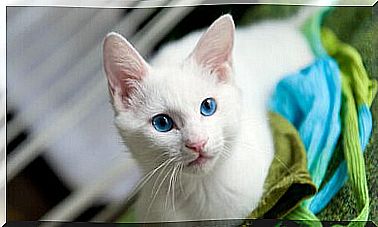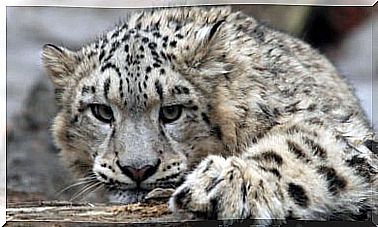8 Characteristics Of Fruit Bats
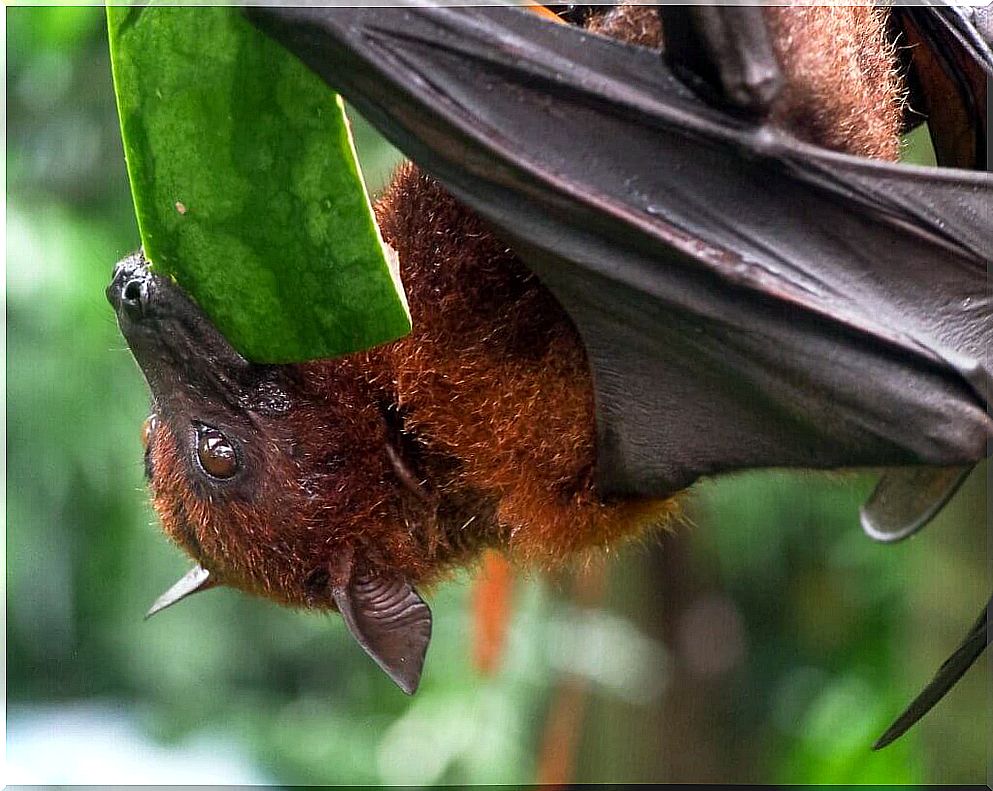
Bats often have an unfair bad reputation. They are known as noxious creatures that try to suck the blood of other beings at the first opportunity, but that couldn’t be further from the truth. Most bats do not feed on blood and, in fact, many of them are frugivores.
Bats are a very diverse group that have adapted to different diets and lifestyles. To illustrate this diversity, here are some hallmarks of one of the most unusual groups of bats: fruit bats.
8 interesting characteristics of fruit bats
These animals are radically different from the bat idea that most people tend to have. In the following lines, we will present some of your curiosities.
1. Suborder Megachiroptera or Pteropodidae family
Bats can be divided into 2 main groups. Representatives of both groups are capable of flying and have a common ancestor, but they have adopted radically different evolutionary strategies.
Bats of the Megachiroptera suborder are the most typical and known. They are usually very small animals, nocturnal and almost blind. They are also the most abundant, with around 85% of the species.
Fruit bats belong to another group, the so-called Pteropodidae , a family with about 197 described species.
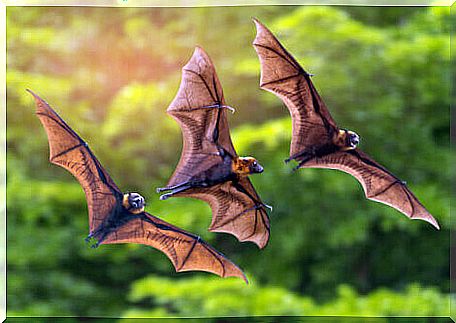
2. The biggest bats
Flying foxes are the biggest bats in existence. Among them, the bat Acerodon jubatus stands out , considered the biggest of all. This animal can reach almost 30 centimeters in length, 1.70 meters in wingspan and 1.5 kilos in weight.
Other giant representatives of this group are Pteropus neohibernicus and Pteropus medius , which reach similar weight to Acerodon jubatus , but have a smaller wingspan.
3. Daytime bats?
While bats are known to be active only at night, this is not the case for all of them. Most fruit bats are nocturnal or twilight, but some species are mainly diurnal. These species inhabit islands, so it is hypothesized that their unusual habits are due to the lower presence of predators.
4. Have good eyesight
the bats of Microchiroptera suborder they have very poor eyesight and depend on echolocation to move and find food. On the contrary, bats from Pteropodidae family they have very large and developed eyes, which gives them very advanced vision, especially in the dark.
Most fruit bats are unable to use echolocation, so they use sight and smell, which are also highly developed, to explore their environment.
5. Follow a vegetarian diet
Despite their large size and sharp teeth, these flying mammals are completely harmless. Their diet consists mainly of all types of vegetable matter.
Some species feed on leaves and others on flowers or even nectar, but most of them mainly consume fruits, which they find thanks to their excellent sense of smell.
Like endothermic and flying animals, they need to ingest a great deal of food to keep their metabolism high. Some species can consume 2.5 times their weight of fruit every night.
6. Garden animals
Many bats play very important roles in ecosystems. This also applies to fruit bats, thanks in large part to their eating habits.
When feeding on fruit, these bats end up swallowing the seeds, which pass through the digestive tract and end up being expelled along with the feces, far from where the animal fed. This promotes the growth of new plants and helps to regenerate forests. By feeding on nectar, they can also function as pollinators.
7. These animals are social beings
Like other bats, these animals are highly social. Fruit bats live in generally large colonies, which can contain hundreds of individuals, among which a series of complex relationships develop.
To do this, these mammals communicate through vocalizations, which they learn from other members of the colony when they are young. Different bat colonies can develop different dialects.
8. Where do fruit bats live?
the bats of the f Pteropodidae amy only inhabit the tropics or subtropics of the Old World. These animals are widely distributed across Africa, Asia, Australia and islands in the Pacific and Indian oceans.
They are closely associated with forest ecosystems of all types as they depend on trees for food and rest. Some species also use caves or cliffs for sleeping, and Australian populations are recently establishing colonies in urban areas.
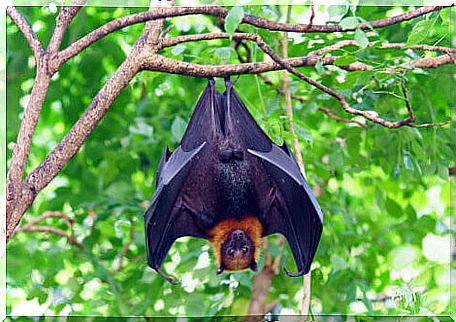
According to the IUCN, 70 of the 197 species of fruit bats are threatened. This is a very high percentage of species that perform essential ecosystem services. Therefore, it is essential to conserve them to maintain tropical forests and the rest of the living beings that inhabit them.





